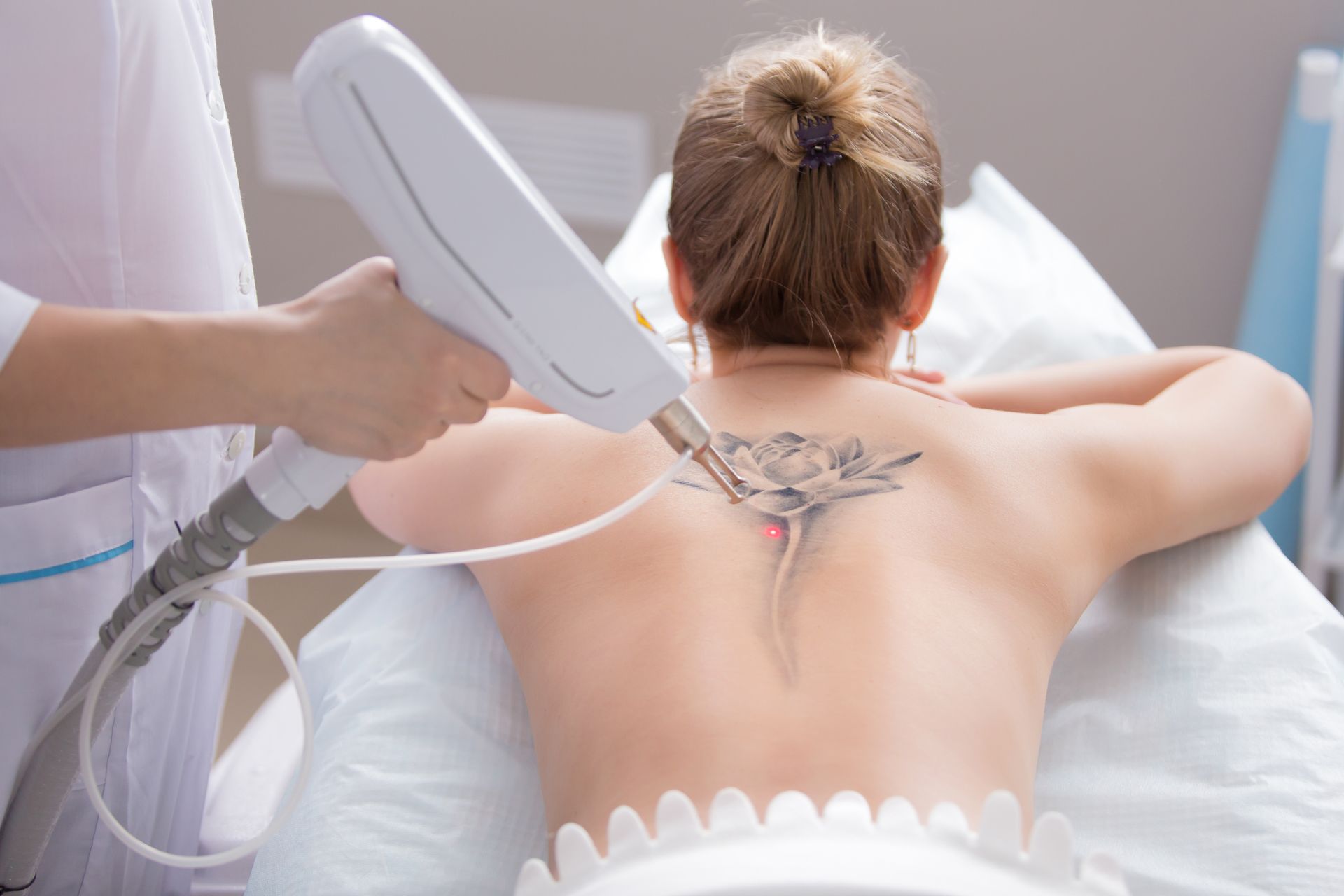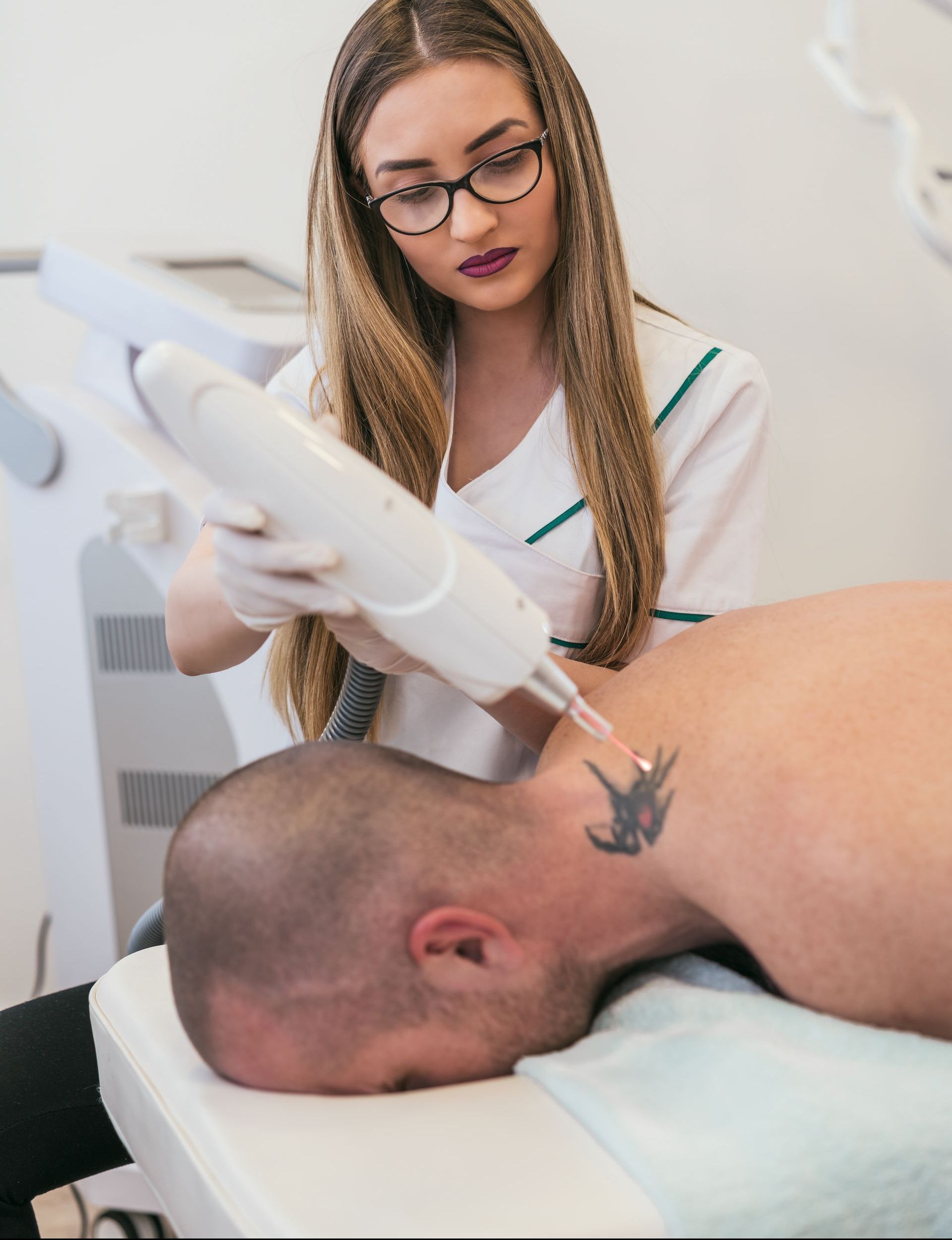Laser Tattoo Removal
Experience advanced laser tattoo removal in Oceanside, NY, effectively targeting all ink colors with state-of-the-art technology and minimal downtime. Schedule your appointment today to begin your tattoo removal journey.
Reveal Clear Skin with Our Tattoo Removal
Laser tattoo removal breaks down ink particles in the skin using advanced laser technology, facilitating natural elimination. Ideal for various tattoo types, the service caters to different designs.
Expect 5-10 sessions, tailored to tattoo size and color. The process boasts minimal downtime, though redness may occur. Reclaim your skin with our personalized approach. Book a consultation today
for professional tattoo removal.
Frequently Asked Questions
Explore our FAQs for insights on laser tattoo removal. Contact us with any remaining queries to ensure you're fully informed before your appointment.
Hear What Our Clients Love About Us
Explore the heartfelt experiences shared by our clients who've achieved their goals. These stories highlight our commitment to providing outstanding care and results.



